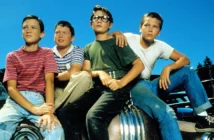Since the release of India’s first talkie, Alam Ara (1931), music has perpetually sustained its position as an outstanding candidate for entertainment and refined aesthetics. It has witnessed several revolutions within Indian Cinema and – as a dynamic element of the Indian film language – has been subject to countless transformations, with the first-ever occurrence happening with the entry of ‘sweeter’ voices like the Mangeshkar sisters, Geeta Dutt, etc., during the late 40s. Indeed, this influx of new talent superseded ‘coarser’ voices like Zohrabai Ambalewali, Shamshad Begum, and Amirbai Karnataki, who were part of a musical tradition that was more based upon forms of folk culture and Islamic devotional singing like qawwali. The rise of lyrical, rhythmic singing demanded a contradiction (to appeal to broader tastes), and so Shamshad Begum remained the only bird from the lost generation of the first playback singers of Bombay Cinema to keep soaring (thanks to her excellent networks within the industry).
However, Shamshad Begum wasn’t really the only person qualifying for low–pitched singing. We also had the lesser–celebrated Mubarak Begum, who demonstrated novelty in the brokenness of her verses that suited the needs for melancholic music. Not to imply any limitations within vocal range; indeed, Mubarak Begum invested in other moods, albeit not as frequently. Her rendition in Cobra Girl (1963) with Suman Kalyanpur, ‘Nigahon se Dil ka Salaam’, still manages to make my heart skip, becoming a finer example of her exponentially diverse oeuvre. One classic song by Mubarak Begum, an all-time favourite amongst her admirers, is ‘Ham Haal–e–Dil Sunaenge’ from the 1958 Bimal Roy film, Madhumati. Penned by the legendary Hindustani poet, Shailendra, the song is presented as a tawaif’s woeful exclamation of betrayal, with nuances from traditions of the gharana of Hindustani classical music and beautified by Begum’s heavy tones.
Unfortunately, Begum’s career was affected by multiple factors, including her lack of networks, industry politics, and the feverish ‘Lata Mangeshkar effect’. I don’t mean to belittle Mangeshkar’s contribution to music (it’s been remarkable!), but researchers have often questioned the nature of this phenomenon: how was India able to hold onto a single voice for more than 40 years? This is certainly not my topic of interest here, but definitely a question I would try to find answers to.
Whatever the reasons were, Mubarak Begum’s failure to capitalise on her talents is saddening, as her career ultimately dropped in 1981. What’s worse is that Begum was quickly forgotten by the entire industry, and her case is not the only symptom of the politics of remembrance: several other artists like Cuckoo Moray and Laxmi Chhaya have been victims of the same dirty tradition, and it’s a shame that artists’ contributions get rewarded in such terrible fashions. Nonetheless, I have grown up to appreciate Mubarak Begum’s unforgettable jingle of pausing hope that reflects both within her personal life and the nature of her voice. Hers was a riveting tale of stardom and its enchanting hypocrisies. But the chapter she’s written through her songs would consistently echo through the pages of film history, which overweighs with the outcries of hundreds of ignored voices and talents, but never fails to convey the truth. The name was Mubarak Begum, the finest amongst the finest.
See you next month!




1 Comment
Incredible article! Can’t wait for next month.